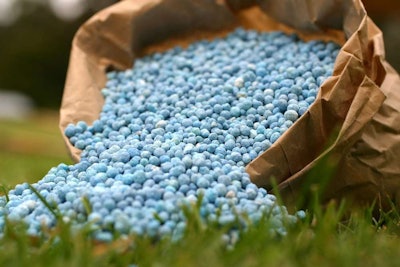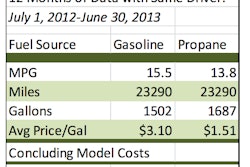
An effective fertilizer program must produce healthy, green turf, but it also needs to make sense from a financial standpoint.
Christina Burton, Turfgrass Science graduate and Maintenance Channel Manager for Horizon, shares a method to calculate fertilizer costs.
If you’re looking to lower costs, one of the biggest mistakes you can make is choosing a fertilizer solely on price. The bag price is an important factor when figuring out the annual cost of a program, but it’s only part of the equation.
As discussed in the YouTube video, one of the most common objections when it comes to slow release fertilizer is the bag cost is too high. But when you look at how long the fertilizer lasts and a few other factors, programs utilizing slow release fertilizer usually cost less overall.
Comparing the cost of fertilizer
One of the biggest problems with quick release fertilizers is they don’t last very long, usually only four to six weeks. On the other hand, slow release fertilizers routinely last anywhere from two to four months, and a few last even longer.
A reliable way to compare fertilizer costs when you’re preparing for a single application is to calculate the cost of fertilizer per acre per week. Here’s how you do it:
Step 1: Calculate the number of bags needed to fertilize 1 acre
When you look at a fertilizer label, the first thing you’ll want to find is the NPK ratio. This will show you the percentage of nitrogen (N), phosphorus (P) and potassium (K) in the bag.
Quick release fertilizers tend to have less nitrogen in the bag, so if you’re fertilizing at the typical application rate of 1 pound of N per 1,000 square foot, you will need more bags of fertilizer to get the job done.
Step 2: Multiply the number of bags by the bag price
Once you’ve determined the number of bags needed to fertilize one acre, multiply it by the bag price.
Cost to Fertilize One Acre = Number of Bags x Bag Price
Step 3: Divide the cost to fertilize one acre by how long the fertilizer lasts
If we were just looking at the cost to fertilize one acre, quick release fertilizer will usually be cheaper. But one of the main benefits of moving to a slow release fertilizer is that it lasts much longer than quick release fertilizer. This is where you start saving your money.
Cost of Fertilizer per Acre per Week = Cost to Fertilize One Acre / Fertilizer Duration (in weeks)
When you pay a few dollars less for a product that only lasts half as long, your fertilizer ends up costing you more in the long run. But the savings are actually greater when you consider a few other costs.
Other ways slow release fertilizer saves you money
There are other costs to think about when it comes to your fertilizer program. You should also consider:
- The cost of labor. Fertilizer doesn’t apply itself and labor isn’t cheap. Every application of fertilizer means additional labor cost.
- The cost of gas. Unless you live on the property, you’ll need to get to and from the job site, which wastes additional time and money.
- The cost of additional mowing and maintenance. One of the main benefits of using slow release fertilizer is that it produces steady, healthy growth. Quick release fertilizers often cause a quick surge of growth, which requires additional mowing.










